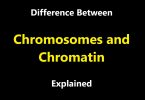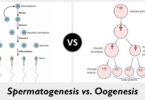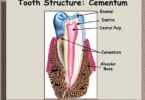Cementum vs Alveolar Bone
Summary: Difference Between Cementum and Alveolar Bone is that Cementum is comparable to bone in its proportion of inorganic to organic constituents and to similarities in its structure. The cementum is thinnest at its junction with the enamel and thickest at the apex. While Alveolar bone is the alveolar process of the jaws that forms and supports the sockets for the teeth. They develop during the eruption of the teeth and disappear after the tooth is extracted or lost.

Cementum
The cementum is comparable to bone in its proportion of inorganic to organic constituents and to similarities in its structure. The cementum is thinnest at its junction with the enamel and thickest at the apex. The cementum gives attachment to the periodontal ligament fibers. Cementum forms throughout life, so as to keep the tooth in functional position. Cementum also forms as a repair tissue and in excessive amounts due to low grade irritants.
The cells that form the cementum; the cementoblast lines the cemental surface. Uncalcified cementum is usually seen, as the most superficial layer of cementum. The cells within the cementum, the cementocytes are enclosed in a lacuna and its process in the canaliculi, similar to that seen in bone, but in a far less complex network. Cementocytes presence is limited to certain regions.
The regions of cementum containing cells are called cellular cementum and the regions without it, are known as the acellular cementum. The acellular cementum is concerned with the function of anchorage to the teeth and the cellular cementum is concerned with adaptation, i.e. to keep the tooth in the functional position. Like dentin, cementum forms throughout life, and is also avascular and noninnervated.
Alveolar Bone
Alveolar bone is the alveolar process of the jaws that forms and supports the sockets for the teeth. They develop during the eruption of the teeth and disappear after the tooth is extracted or lost. The basic structure of the alveolar bone is very similar to the bone found elsewhere, except for the presence of immature bundle bone amidst the compact bone lining the sockets for the teeth.
The buccal and lingual plates of compact bone enclose the cancellous bone. The arrangement and the density of the cancellous bone varies in the upper and lower jaws and is related to the masticatory load, the tooth receives. The ability of bone, but not cementum, to form under tension and resorb under pressure makes orthodontic treatment possible.
Also Read:
Difference Between Enamel and Dentin
Difference Between Cementum and Dentin
Difference Between Alveolar Bone and Cementum
Difference Between Cementum and Periodontal Ligament
Difference Between Enamel and Cementum







Leave a Comment
You must be logged in to post a comment.